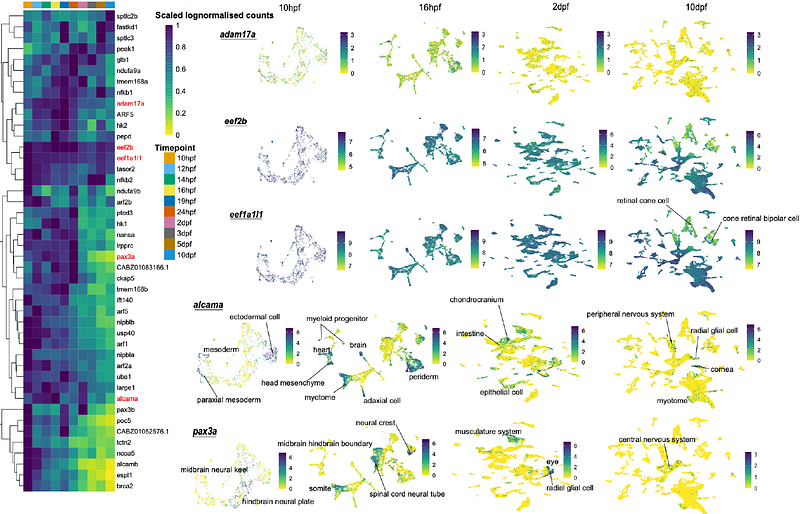Estimates of molecular convergence reveal pleiotropic genes underlying adaptive variation across teleost fish

Estimates of molecular convergence reveal pleiotropic genes underlying adaptive variation across teleost fish
Barua, A.; Beinsteiner, B.; Laudet, V.; Robinson-Rechavi, M.
AbstractTeleosts are the most diverse group of vertebrates on earth. Their diversity is a testament to the combined effects of genetic, developmental, and evolutionary forces. However, disentangling the interactions between these forces is challenging due to the complexity of the genotype-phenotype relationship and the masking of adaptive genetic signals by genetic noise. Estimates of molecular convergence where changes in the sequence of protein-coding genes lead to identical amino acid substitution across multiple lineages provide strong evidence of adaptive evolution. In this study, we estimated signals for molecular convergence in protein-coding genes across 143 teleost genomes to identify genes and processes that experienced adaptive changes. We find that genes with signals of molecular convergence are implicated in diverse processes ranging from embryonic development, tissue morphogenesis, metabolism, to hormone and heat response. Some convergent substitutions are located on functionally important sites on proteins potentially providing the molecular basis for adaptations to hypoxia, salinity fluctuations, and varying skeletal morphologies. Additionally, single-cell RNA sequencing data from zebrafish showed that the convergent genes have dynamic expression across various cell types during embryonic development. These results highlight the functional importance of the convergent genes as well as their pleiotropic nature. Although traditionally considered a source of genetic constraint, we argue that adaptation via changes in pleiotropic genes are particularly advantageous during periods of ecological shifts. We present the pleiotropic release model which describes how adaptive variation on pleiotropic genes can have large fitness effects, allowing organisms to overcome selective pressures during periods of ecological shifts.


